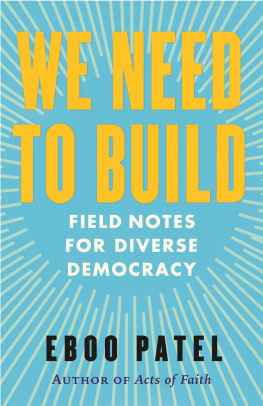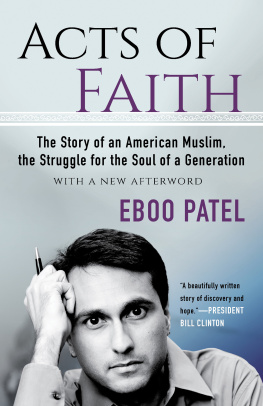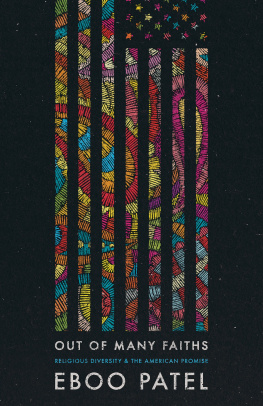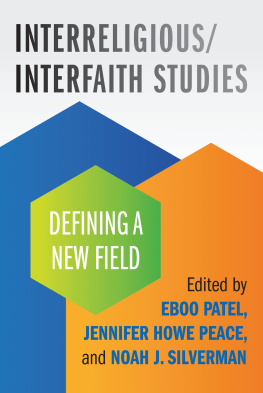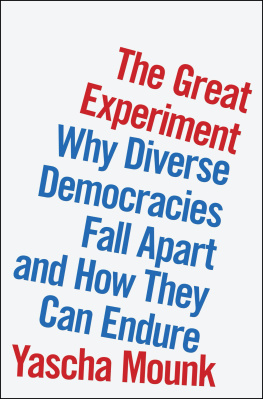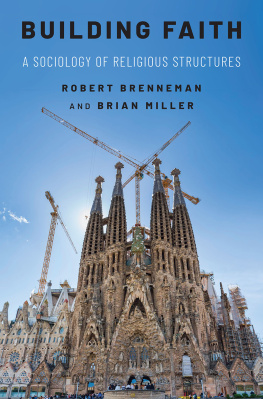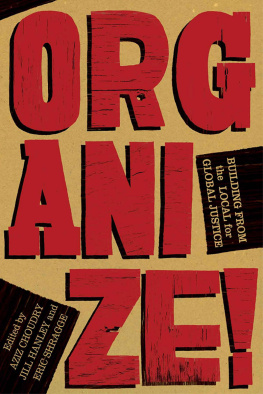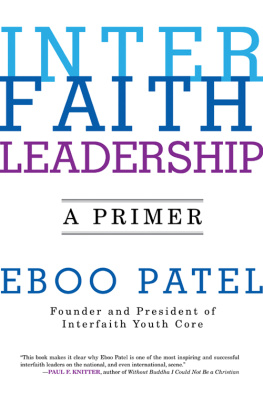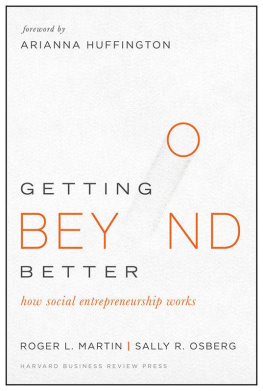Contents
Pagebreaks of the print version
Guide

For my sons:
Zayd and Khalil
I speak the pass-word primeval, I give the sign of democracy. By God! I will accept nothing which all cannot have their counterpart of on the same terms.
WALT WHITMAN , from Song of Myself
INTRODUCTION
A JOURNALIST ONCE ASKED THE CIVIL RIGHTS ICON JOHN Lewis, at that point comfortably in middle age, what it felt like to go from a protestor in the rural South to a policymaker in the nations capital. The answer was wise and measured: when the drama in the streets is over, the work must continue through different means in other spaces.
In the case of John Lewis, the work shifted to the world of government. And as he launched his career in Congress, he came to realize that it is one thing to fight from the outside to overturn an evil regime and quite another to work from the inside to improve an imperfect nation.
Everything John Lewis did was about advancing civil rights, from his childhood preaching to chickens in rural Alabama, to his leadership role in the Student Nonviolent Coordinating Committee (SNCC), to his many terms as the representative for Georgias Fifth Congressional District. John Lewis went from organizing demonstrations to organizing Congressional hearings; from registering his grievances through sit-ins to being the seat of power in rooms hearing out the grievances of others.
There is, no doubt, a clear through line to the work of John Lewis. Over the course of it allfrom the cracked skull he suffered on the Edmund Pettus Bridge to the achievement of the Voting Rights Act, from the election of Barack Obama to the election of Donald Trumphe claims to have never despaired. He always believed that America could become a beloved community. He was proud of the progress that had been made, that indeed he had helped make. Even as a congressperson he led protests but politely quieted those in his camp who shouted shame upon the other side. He believed to the end that at least some of those people were potential allies who had not yet been convinced, temporary opponents who might still be won over, not permanent enemies who had to be destroyed. He had seen too much change in his own life to think differently.
As an activist in the 1960s, John Lewis marched to prevent the silencing of Black voices, the suppression of Black votes, and the erasure of Black lives. As a congressperson in the 1980s, he introduced the legislation that paved the way for the National Museum of African American History and Culture. While the spirit and values remain constant, and some of the skills (certainly speaking and organizing) transfer, there is a marked difference between being a protestor against segregation and laying the groundwork for a new and permanent Smithsonian institution. The first seeks primarily to expose structures of injustice, the second to construct a more just society.
These two dimensions of social change work can certainly go hand in hand. People are generally wary of turning away from a system that they know, bad as it might be, if they do not believe that something better can be built. And in order to trust that something better can be built, people need to have faith in the leaders doing the building.
People trusted John Lewis. He knew when to demonstrate and when to negotiate. His activism changed the space; his legislation furnished the room.
The story of Bob Moses follows much the same arc. In the 1960s, Moses played a key role in bringing down legalized racism in the Deep South. Along with John Lewis, he helped lead SNCC, served as co-director of COFO (the Council of Federated Organizations, an umbrella group of the major civil rights organizations), and was the principal organizer of Freedom Summer in Mississippi. He was a central player in the drama in the streets.
In the 1980s, while studying for his PhD at Harvard, Bob noticed that the poor Black students at his daughters middle school were consistently tracked into lower-level math courses than the wealthy white kids. This meant that they took algebra years later. In the American education system, algebra is the gateway to higher-level educational and career pathways. Delaying algebra effectively relegates you to second-class economic status.
Bob called his initiative the Algebra Project, an institution that spread math literacy through poor Black communities. As you might imagine, this prompted some cross-eyed stares from people who admired his work in the streets. You mean, you helped bring down Jim Crow segregation in the South, and you followed that up by... becoming a middle school math teacher? To top it all off, youre claiming that these things are somehow equal?
But Bob Moses, like John Lewis, maintained that his new work was just as important as his old work. In fact, it was all part of the same work, just carried out in different sites and by different means. The protests of the civil rights movement were about political empowerment through voting. The teacher training workshops of the Algebra Project were about economic empowerment through math literacy. Both were about full citizenship in American society. When people told Moses that teaching algebra wasnt radical in the way protesting segregation was, he would quote his mentor Ella Baker on what it meant to engage in radical work: It means facing a system that does not lend itself to your needs and devising means by which you change that system.
As a young Black civil rights worker in the Deep South in the 1960s, a principal means available to Moses was protest. He would picket for hours outside local stores that refused to serve Black customers, often by himself. As founder of the Algebra Project in an America that had ended legal segregation, in part because of his efforts, Bob had a whole different set of tactics available to him. He could meet with education officials, corporate executives, local politicians, foundation presidents, and wealthy philanthropists. Precisely because his years protesting in the streets were successful, he was now able to walk through the front door of fancy buildings and negotiate at the table. In this way, he created a novel approach for engaging young people in mathematics, raised millions of dollars for his organization, spread the Algebra Project to hundreds of schools, and helped tens of thousands of poor Black kids advance along the path to economic and educational achievement.
The protests that Bob Moses helped lead in the 1960s were part of the revolution that ended an evil order of legalized segregation and discrimination. The success of that revolution paved the way for the launch of the Algebra Project, an institution that is part of the architecture of a more just new order. Bob went from demonstrating against school superintendents who supported segregation to cooperating with people in the same position to launch curriculum design workshops. That requires both an expanded set of skills and a shift in emphasis.
The life and work of Bob Moses raises a profound question: Once you have deposed people who use power for unjust ends, do you know how to take some of that power and build something better? In short, do you have what it takes to be in charge?
Being in charge means articulating a vision for what the new system will look like, offering a detailed blueprint of its various institutions, empowering and training up a group of builders, and

